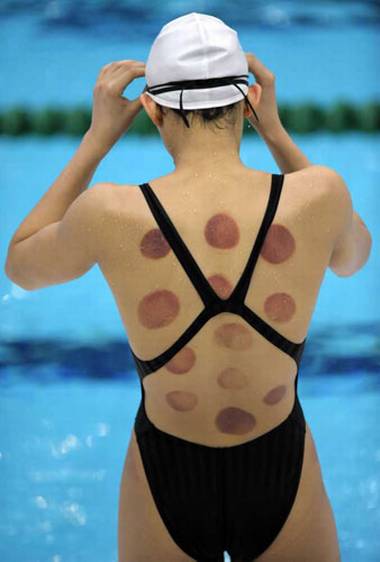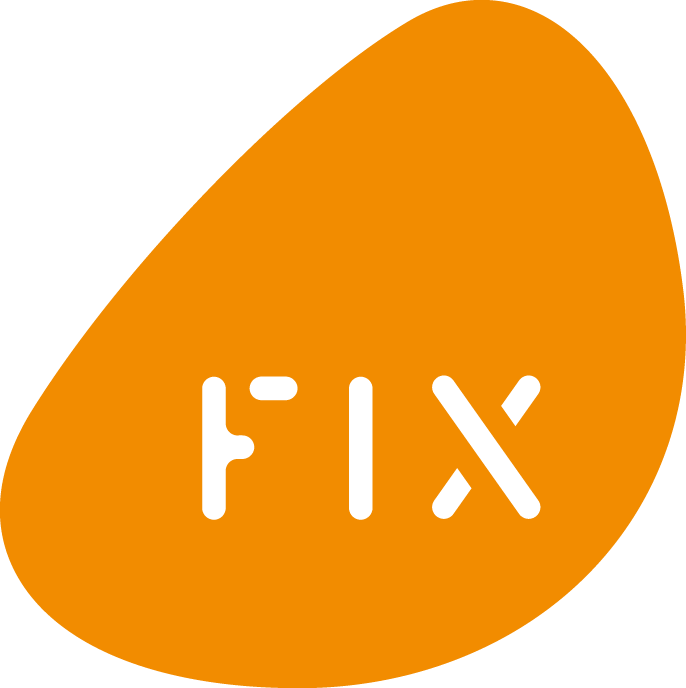Just over a month ago we said goodbye to Cate Boyle, learned master in the art of Traditional Chinese Medicine, generous friend and one of our most treasured practitioners here at Fix London Fields in Hackney, as she searches for new adventures on her 6 month sabbatical. Although she will be returning to Fix soon, for the time being she has left us in experienced hands and we are proud to welcome Andy Levy and Cristina Betto to the Fix team at London Fields. Katherine Stewart, our Front of House and blogger decided to catch up with Andy last week and seize the opportunity to pick his brain about his approach to the ancient Chinese practices of Gua Sha and Cupping.
Accompanied by a growing popularity in the holistic practices of Yoga and Tai Chi, traditional Chinese medicine has begun to attract considerable attention in the West. Hailed for its more natural health care system, it offers a holistic, ‘mind-body’ approach to our otherwise compartmentalised and sometimes alienating medical practice. The increase in its demand demonstrates that many of us are choosing to be in control of our minds and bodies, in preference to being offered pills for problems we know little about to begin with. As a result of this popular intrigue, I decide to book myself in with Andy – our new therapist of Chinese Medicine – to get to know two of the more obscure practices we provide at Fix, Gua Sha and Cupping.
Before entering my appointment I feel rather apprehensive, as a mental image of the rather severe looking marks left from Gua Sha creeps into my mind. However, once I’m settled on the massage table, Andy’s knowledge and passion comforts me. He begins the practice by using a blunt-edged tool to press down in one-directional strokes between my shoulder blades, over which he has already applied a thin layer of massage oil. Promptly, we get onto talking about how he came to be involved in the practice of Chinese medicine, notably Acupuncture, Gua Sha and Tui Na.
“I started off my career with a Tui Na course, a form of massage therapy and one of the five limbs of Chinese Medicine” he says, “The word Tui Na actually came to me in a dream and at the time I had no idea what it meant. I thought it was a type of Italian pasta! Then one day my friend, who is a GP and also practises Chinese Medicine, mentioned it to me in passing and the hairs on the back of my neck immediately stood up, on hearing the word. I decided to embark on a course in Tui Na and then realised that the Chinese Medicine theory was the same as Acupuncture so I did the two in tandem.”
Common knowledge suggests that Gua Sha has been practiced since the first century AD. The practice is intended to create transitory therapeutic petechiae called ‘Sha’ that represent the blood cells moving to the outside of the vessels – this is called extravasation of the blood and reveals itself in marks on the skin. Although the marks from Gua Sha may look harmful sometimes even to the point of looking like lashes of a whip, the scrapping does not damage the capillaries and instead activates them.

The colour of the ‘Sha’ much like the colour of the mark left after a session of Chinese Cupping therapy, reveals insightful information regarding the condition of the patient’s blood. In Chinese medicine this is commonly referred to as searching for ‘Sha’ stagnation. If the mark is pale red it may suggest a blood deficiency, dark red suggests static heat in the body and purple or black ‘Sha’ is a marker of chronic blood stagnation. Gua Sha and Cupping therapies work towards removing the stasis and acts as catalyst for anti-inflammatory processes to occur within the body. The general effects of Gua Sha are to reduce inflammation and pain (sometimes instantly), increase range of movement, minimize inflammation of the liver and enzymes, improve breathing and circulation, as well as protect the body from oxidative stress and boost immunity.
As we talk, I discover that Eastern medicine has never been an entirely foreign topic to Andy, whose father was an Acupuncturist and mother is an Astrologer. “I remember being a ten-year-old and having acupuncture performed on me” he says laughing. I ask him whether he believes in the practice, and his answer is, “It’s less about belief and more about coming to realise that Western medicine is far from the be all and end all of medical practice. In the West we tend to look at symptoms and define and refine until we find our mark and ultimately kill, whereas in Chinese and even Ayurvedic medical practice everything is approached holistically. In Chinese medicine there is no absolute, everything is Yin and Yang and within the Yin is Yang and Yang within Yin.”

By this stage, Andy has finished scraping and the Gua Sha therapy has left a tingling sensation on the surface of my skin. Whereas I entered the room rather cool, my extremities are now feeling warm and comfortable and my body is emanating a newfound heat. I give Andy’s last sentence some thought and come to realise the profound nature of his statement. In the West we tend to dismiss Eastern Medicine as being wholly reliant on a belief system as opposed to empirical fact, without realising that Allopathic medical practice came about in a very similar way, preserved and proliferated in the name of ‘scientific knowledge’ but ironically, no less dependent on a system of belief than its Eastern counterpart.
While we continue to discuss the shortcomings of modern medicine, Andy begins the second part of the treatment, the Cupping therapy. “We end up looking too much at tests rather than our own observations” he says, as he places four suction cups onto what he refers to as the ‘detox points’ on my upper back. “Yet, the gold standard of Allopathic medicine continues to reign notwithstanding the fact that Chinese medicine provides more holistic solutions to our problems”.
Andy explains that Cupping can be carried out in two ways, either with plastic cups and a suction pump that creates negative air pressure in the cup, or the more traditional method of fire and glass cups whereby the fire removes the air in the cup and creates suction; we were using the former. “It differs from Gua Sha in that it has more to do with muscles rather than blood therapy and skin” he explains. The cups are left to do their work for about 15 minutes, throughout which I feel the heat in my body move centrifugally towards their location. The suction force feels strong but not uncomfortable and after a while I relax into the sensation.
The ‘detox points’ are prime areas for revealing daily wear and tear of the body, as many of us retain trauma and tension in our backs, be it from bad posture or physical strain. Thus, the darker the colour of the marks left behind the greater the severity of the strain in that area. I leave the treatment room feeling relaxed and relieved at the fact that the process was not in the least bit painful. The marks on my back from the Gua Sha are visible but those of Cupping have yet to appear.
Later on, once I’m home and the blood has had the time to settle on the surface of my skin, I notice that the Cupping marks on my right shoulder are darker than those on my left. I think back to what Andy had said about the value of observation in exercising self-preservation and grab Atul Gawande’s book Being Mortal from the bookshelf. I flick through to one of the phrases I had underlined, “We always hope for the easy fix: the one simple change that will erase a problem in a stroke. But few things in life work this way. Instead, success requires making a hundred small steps go right – one after the other, no slipups, no goofs, everyone pitching in.”
When it comes to exercising awareness Chinese medicine can be an infinitely valuable tool in teaching us observational techniques as opposed to being primarily – and often solely – focused on an ideal of health and an endpoint of survival. Furthermore, Chinese medicine does show physical results, as Andy tells me that about 80% of the acupuncture induced births he has carried out have been successful and I myself have heard positive feedback from patients at Fix.
Perhaps, the reason that non-Western medicine is dismissed so easily in our corner of the world is due to the fact that we have been conditioned to remain stagnant in our thought, convinced of the myth that medicine is an orderly and professional procedure as opposed to a process that relies to equal extent on our own independent intuition. On that note, I was left with something very positive to take away from my session with Andy. This being, that the value of Chinese medicine is twofold, as it not only has the ability to release us from the toxins in our stagnant blood but from our persistent, boundaried patterns of thought.
You can catch Andy Levy at Fix London Fields on Friday afternoons. For bookings please visit https://fixlondon.co.uk
